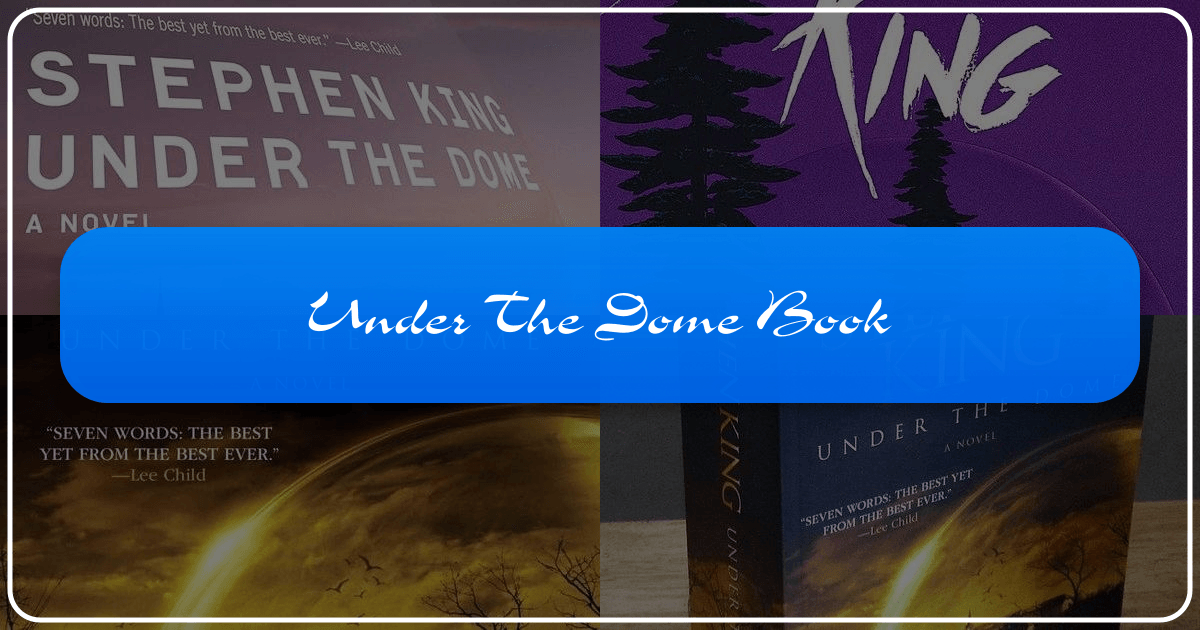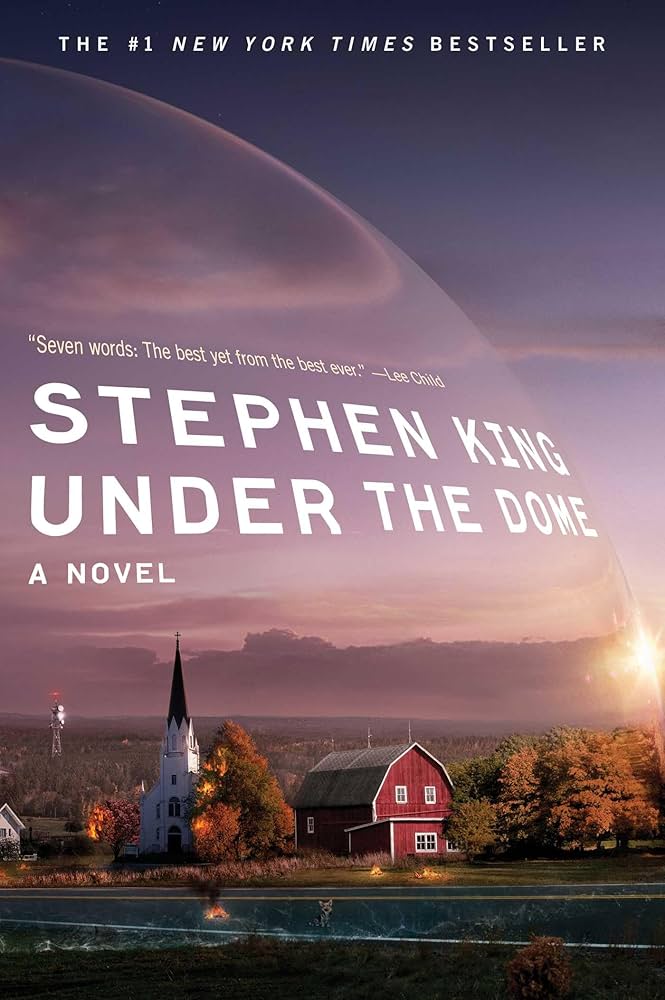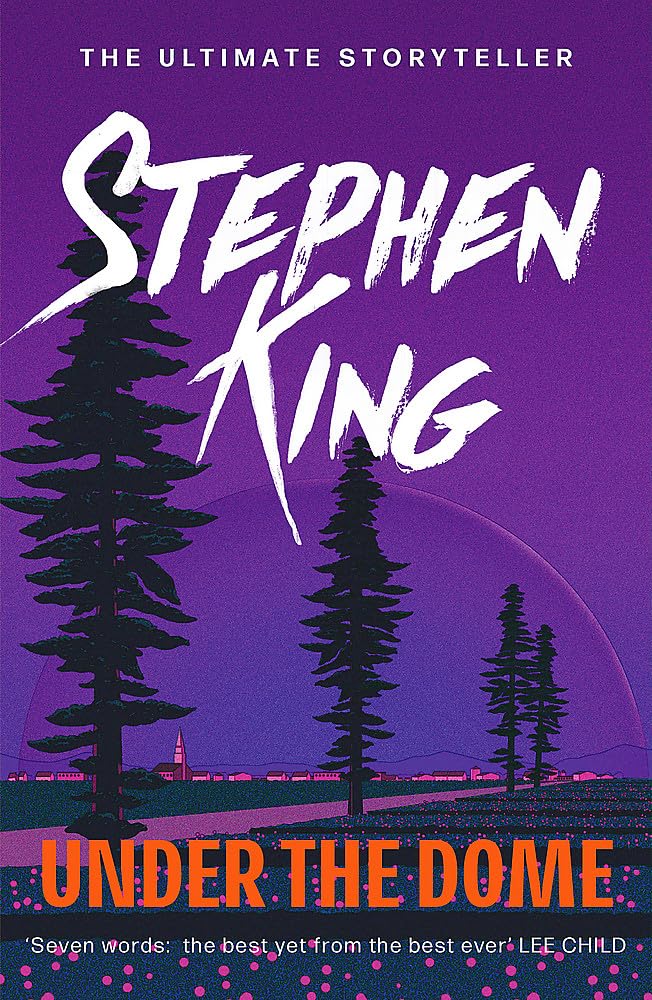Under the Dome Book: A Comprehensive Exploration

Stephen King’s Under the Dome is a sprawling novel that captivated readers with its blend of suspense, horror, and social commentary. This in-depth analysis examines the book through various lenses, exploring its genre, literary influences, adaptations, and cultural impact. We will delve into the intricacies of King’s writing style, the complexities of the characters, and the enduring themes that resonate with readers.
Genre and Literary Classification
Under the Dome defies easy categorization. While primarily a thriller due to its suspenseful narrative and fast-paced plot, it also incorporates elements of science fiction, horror, and even social realism. The science fiction element is introduced by the inexplicable dome itself – an impervious barrier that isolates the town of Chester’s Mill from the outside world. This fantastical premise provides the backdrop for a story that explores the darker aspects of human nature under extreme circumstances.

The horror elements are more subtly woven into the fabric of the narrative. While not relying on jump scares or graphic descriptions to the same extent as some of King’s other works, Under the Dome evokes a sense of dread and claustrophobia through its depiction of societal collapse and the descent into primal instincts. The dwindling resources, increasing paranoia, and emergence of violence all contribute to a disturbing, albeit realistic, portrayal of human behavior under duress.
Finally, the novel possesses a strong current of social realism. King’s meticulous portrayal of a small town and its inhabitants allows for a nuanced examination of power dynamics, political corruption, and community breakdown. The characters’ responses to the dome act as a microcosm of larger societal issues, highlighting the fragility of civilization and the capacity for both extraordinary kindness and unspeakable cruelty. This multifaceted genre blend is a significant factor in Under the Dome’s enduring appeal.

Authorial Style and Influences
Stephen King’s writing style is instantly recognizable. His prose is characterized by its vivid imagery, colloquial language, and ability to create suspense through seemingly mundane details. In Under the Dome, this style is employed to maximum effect, building a richly detailed world that the reader is drawn into seamlessly. The descriptive passages, particularly those focusing on the psychological states of the characters, draw the reader into the story.
King’s masterful use of dialogue further enhances the story. The conversations are realistic, revealing character and advancing the plot concurrently. His ability to capture the nuances of human interaction is one of his greatest strengths, and this is evident in the dialogue throughout Under the Dome.

While King acknowledges no single source for the idea of the dome, many critics have pointed to various literary and cultural inspirations. The classic novel Lord of the Flies shares thematic similarities, presenting a microcosm of society cut off from the rest of the world and collapsing under the weight of its own internal conflicts. This theme of societal breakdown is often explored in science fiction, from The Day of the Triffids to post-apocalyptic narratives.
Other influences, perhaps more subtle, might include classic horror narratives focusing on isolation and confinement. While not solely a horror novel, the sense of entrapment and mounting tension is reminiscent of such classic works. This complex interplay of established narratives and King’s unique style combine to create a compelling reading experience.
Character Analysis and Development
Under the Dome boasts a large ensemble cast of characters, numbering well over one hundred. This is one of its defining aspects, contributing to the novel’s density and realistic portrayal of a small-town community. The characters are not mere archetypes; King develops each individual with remarkable care, creating people with compelling backstories, motivations, and flaws.
Central to the narrative are Dale “Barbie” Barbara, a war veteran grappling with PTSD; Julia Shumway, the determined editor of the local newspaper; and Jim Rennie Sr., the corrupt and power-hungry politician. These characters are multifaceted, their actions driven by a mixture of self-preservation, ambition, and moral conviction. Their internal conflicts and relationships drive the plot forward.
The numerous supporting characters are equally crucial. King uses them to create a vibrant and authentic portrayal of Chester’s Mill. Each character, no matter how briefly depicted, adds to the overall tapestry of the town’s life and contributes to the sense of realism.
The development of these characters is key to understanding the book’s themes. Their progression under the dome reveals the depths of their personalities. The extremes of the situation force them to confront their flaws and ultimately make choices that shape their destinies.
Educational Value and Life Lessons
Beyond the thrilling plot and memorable characters, Under the Dome holds significant educational value. The novel presents a cautionary tale about the dangers of unchecked power, social division, and the fragility of civilization. The events depicted in the novel force readers to question how they would respond in a similar situation.
The characters’ experiences provide numerous life lessons. The themes of resilience, compassion, and the importance of community are explored throughout the narrative. The novel also raises questions about the human condition – the capacity for both good and evil, and the impact of societal structures on individual behavior.
The book’s exploration of political corruption and the abuse of power offers insightful lessons on civic responsibility and the importance of vigilance. Readers can gain a deeper understanding of the dynamics of small-town life and the complex interplay of individual ambitions and community needs.
Moreover, Under the Dome’s exploration of fear, isolation, and the fight for survival is a powerful reminder of the importance of human connection and empathy.
Adaptations and Cultural Impact
Under the Dome has significantly impacted popular culture. Its adaptation into a television series on CBS amplified its reach, introducing the story to a wider audience. While the TV series diverged considerably from the book in terms of plot and character development, it succeeded in maintaining the core themes of isolation, power struggle, and societal decay.
The success of the television adaptation, coupled with the novel’s strong initial reception, cemented Under the Dome’s place in the contemporary literary landscape. The book’s discussions of power and community continue to spark discussions among readers and critics.
Libraries and Archives
The availability of Under the Dome in various formats across different library systems highlights its widespread accessibility and enduring relevance. Public libraries across the globe house both print and digital editions of the novel, enabling readers to engage with King’s work.
Similarly, digital libraries offer e-book and audiobook versions, expanding the book’s reach and accessibility. The novel’s continued presence in library collections signals its standing as a significant work of literature.
Conclusion
Stephen King’s Under the Dome transcends simple genre classifications. It is a powerful novel that explores themes of human nature, societal fragility, and the consequences of unchecked power through a captivating and suspenseful narrative. The book’s multiple adaptations and continued presence in libraries showcase its lasting cultural impact. Its complexity and depth offer opportunities for insightful discussion and reflection, making Under the Dome a worthwhile read for individuals interested in thriller, science fiction, and social commentary.